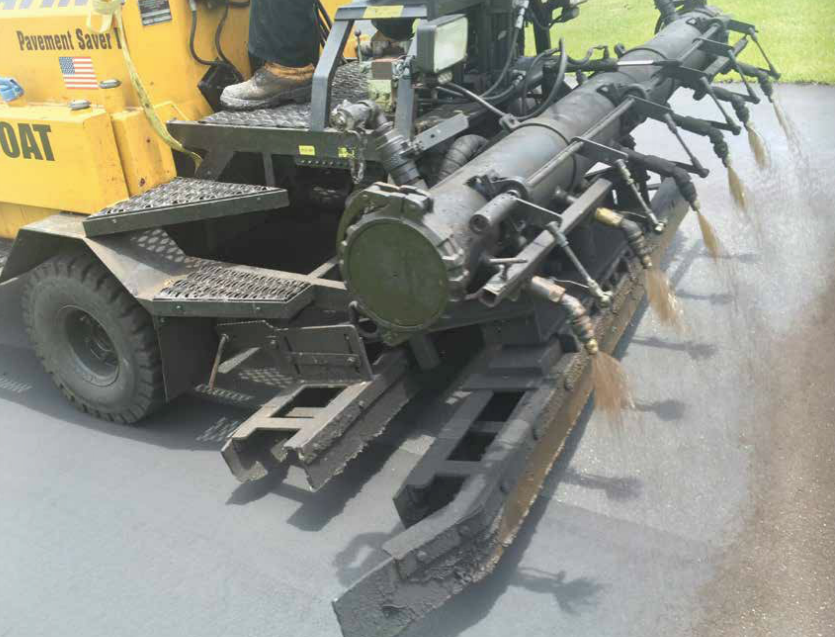Maintain Spray Bars
BY AsphaltPro Staff

Whether you lay down tack prior to paving or you spread a pretty sealcoat to lengthen the life of a community’s roadways, the spraying equipment you use requires routine maintenance to stay in good condition. Any buildup of tack, emulsion, sealant, paint or other material used on the job can turn into a bad day next time you put the machine in service.
It’s self-evident that a caked up spray nozzle spewing 300-degree tack at all the wrong angles could severely burn ground laborers nearby. Sealer sprayed at ambient temperatures might not burn a worker who’s too close to the spray wand, but it can get on a pricy car that your company gets to repaint.
The reasons for keeping spray bars and nozzles clean and in good repair could go on for pages. Let’s get down to brass tacks. To keep the crew from wasting material or having an incident in the work zone, make sure routine cleaning and maintenance of spray bars is part of each shift. In fact, by making the activity of cleaning the spray bar and nozzles part of the end-of-shift routine, you make this type of maintenance easier for the crew to accomplish successfully.
“Heat helps clean things up, so waiting may make it more difficult to clean,” Jarrett Welch said. He’s the proprietor of his new consulting service, Quality Paving Consultants, Denver. “I see a lot of distributor drivers carry a roll of wire, and they use that to poke and clean the nozzles. I have seen a few carry a coffee can with replacement nozzles, so they take it off and drop it in the can and take a clean one out to replace it.”
In other words, keep a small bucket of release agent—Welch suggested the orange cleaners work well for cleaning up tack—with the distributor truck or pavement maintenance equipment, and keep one or two nozzles “soaking” in the liquid. If a nozzle becomes clogged during the shift, take the time to stop and change out the obstructed nozzle for a clean one that won’t mess up your spray rate, coverage and pattern.
What Welch described is a practice John Ball teaches the crew to perform. He’s the proprietor of Top Quality Paving, Manchester, N.H., and reminded readers to treat nozzles with care. “You can use a wire brush to clean the nozzles; it doesn’t have to be anything special. The only thing you have to watch out for is the plastic tubing. You always clean the spray bar when it’s hot. To clean the brass tips, we usually use brake cleaner out of an aerosol can.”
Don Etnyre of E.D. Etnyre shared that there are operator manuals on the company’s website that give instruction on cleanout procedures for its distributors. Specifically, check out pages 29 and 30 of the Centennial Asphalt Distributor Booklet at www.Etnyre.com. He also shared that the nozzles on the Etnyre equipment don’t require a brush or wire for cleaning under normal operations.
“During normal operations we do not clean out the nozzles,” he said. “There are two functions called ‘suck back’ and ‘flush.’ First, the operator pulls as much asphalt as possible out of the bar and circulating system using pump suction, and then flushes the system with release agent. The spray system is clean enough to be used again; hot oil is circulated, which loosens any residual asphalt. Unless there is foreign matter stuck in the nozzle, they self-clean and spray.”
Once again, temperature topped the list of priorities. “The ‘suck-back—flush’ functions are performed immediately after shooting material while everything is still hot,” Etnyre said.
